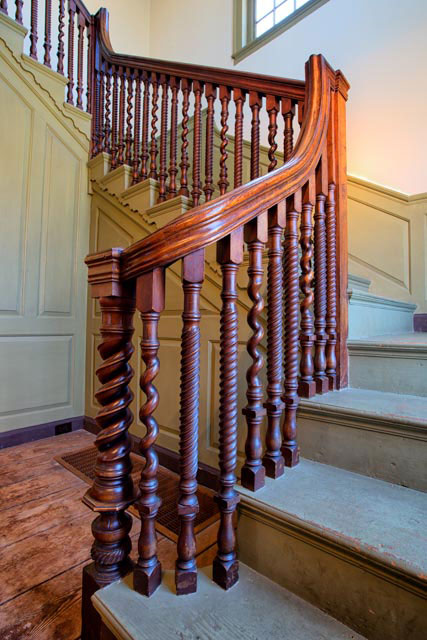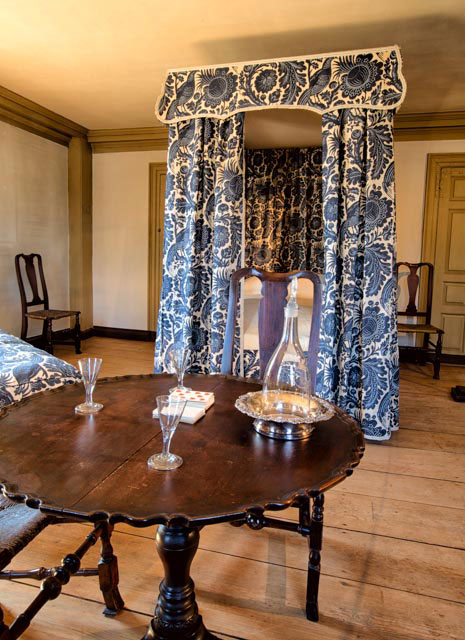
Home Structural Products & Services, Stairlifts
Structural Products & Services, Stairlifts
Furniture, Clocks,
Accessories
Antiques, Folk Art,
Fine Art, Auction Houses
WALTZING THROUGH THE RIPTIDES: The Ordeal of Silas Deane
By Max H. Peters Photos by Skip Broom
| It’s been a dozen years since I first visited the Silas Deane house, part of the Webb-Deane-Stevens Museum complex in historic Old Wethersfield. At the time of my first visit I didn’t know Silas Deane from Jimmy Dean sausage. I was just looking at a museum house. I’m not a historian; I suppose you can call me a history buff. Like a lot of people from Connecticut, I’ve got this bug for anything Early American and a positive fever for anything Early Connecticut. What happened to me was that the house, built in 1767, furnished with period furniture and décor, became a portal to my learning about Silas Deane’s life, the beginning of my trying to see past the costume drama of the American Revolution into the sometimes grim reality of those times. Silas Deane died over two hundred years ago, but his life keeps playing out, as he continues undergoing character assassination to this day. | 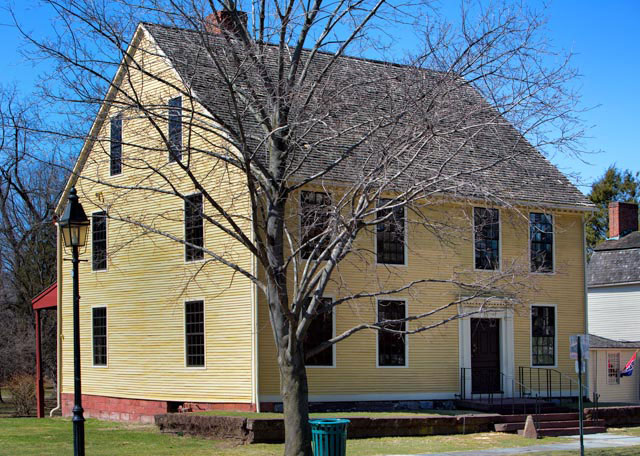 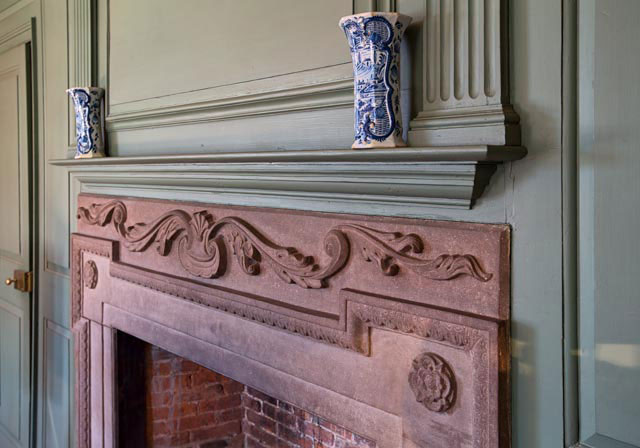 |
| Silas Deane could be the poster boy for the old saying “No good deed goes unpunished.” The most up-to-date historical research solidly confirms two facts: | |
|
|
In 2005, Oxford University Press reprinted The Glorious Cause, by Robert Middlekauff, the first volume of the Oxford History of the United States, originally published in 1982, now “newly revised and expanded for a new generation of readers.” If we believe Middlekauff, Deane “was allowing French aid to fall into his own pockets." According to Middlekauff, Deane and the playwright Beaumarchaise “found opportunities to direct some monies into their own pockets.” This is untrue about Dean and shamefully untrue of Beaumarchais, who, on his personal credit sent over forty shiploads of supplies to the Continental Congress and was never paid a dime.
Historian Jean Paul, in his 2009 book Unlikely Allies, points out that “Long before Franklin set foot in France, Deane had already formed the foundation of our alliance.” Paul quotes from British spies who reported to His Majesty’s Secret Service that between Franklin and Deane, Deane was “the more active and efficient man.” According to Paul, “While Franklin posed for the painters and sculptors, he left to Deane the details of negotiating financing, equipping, raising, and arming a fighting force.”
|
Wikipedia, H.W. Brands, and others refer to what they call Deane’s sloppy bookkeeping as a partial explanation of his problems. They overlook the fact that Deane was originally sent to France in 1776 as a covert agent and was ordered to hide his dealings with the French behind a cover of private business. When he was made an official envoy in 1777, along with Benjamin Franklin and Arthur Lee, Deane was involuntarily caught up in the vicious riptides of American Revolutionary politics. Deane’s problem wasn’t bad recordkeeping; it was that he had a co-ambassador named Arthur Lee who was extremely jealous of Deane’s accomplishments. Lee had powerful political connections and wasn’t averse to utilizing them to push Deane out of his way. Robert Middlekauff, so wrong about Dean, is spot on when hedescribes the era of the American Revolution as “a period of enormous passion, and its politics translated into intense, galvanizing, organizing animosities.” Without going into the sad details, it is enough to say that Silas Deane, a blacksmith’s son with no guile, found himself losing his footing in the crosscurrent of savage political riptides. His saving grace in the end was that he waltzed, rather than crawled, to his destruction. In 1841, fifty years after Dean’s death, the U.S. government awarded Dean’s family $37,000, finding that Arthur Lee’s charges of embezzlement and treason were “ex parte, erroneous and a gross injustice to Silas Deane.”
Almost two centuries later, these slanders are finally being quashed for good. It has taken a long while, but history, while we watch, is finally correcting itself about Silas Deane. In the same way that we feel the solemn responsibility to continue to find and return home the remains of American World War Two soldiers lost in the Pacific jungles, the final clearing of Silas Deane’s nameis a necessary piece of business this nation has with its essential self. A Founding Father is a hell of a thing to misplace for over two hundred years. |
For more information, the Webb-Deane-Stevens Museum maintains the website SilasDeaneOnline.com. From the Wikipedia article on Silas Deane: “A dance, known as the Silas Waltz, became popular in the late 19th century [and] is speculated to be invented by Deane.”
| Depicted on this plate produced by Limoges in France in 1973 is a meeting in Paris in 1776 where Lafayette arranged a secret agreement for aid from the French government to the American insurgents. Looking on at the right, in hat and boots, is Silas Deane. Author’s collection. | 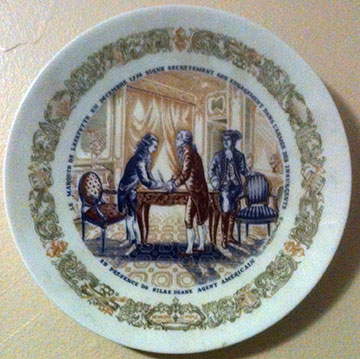 |
